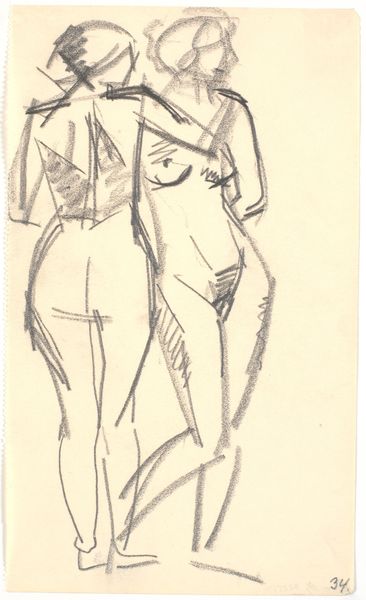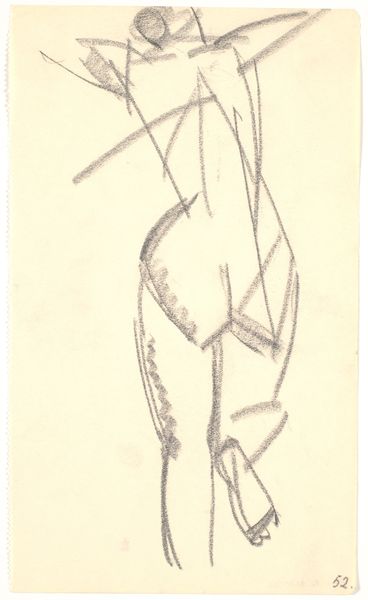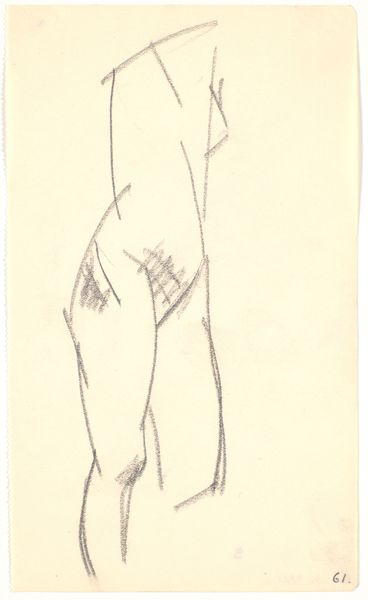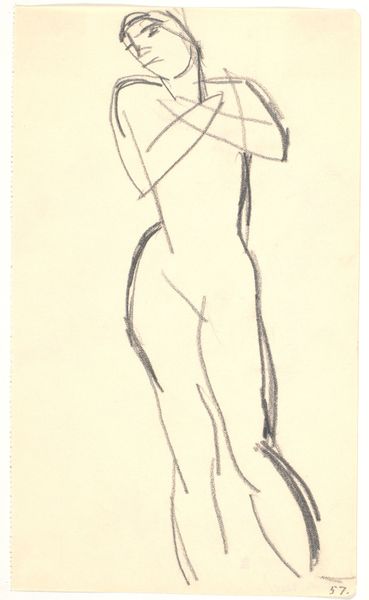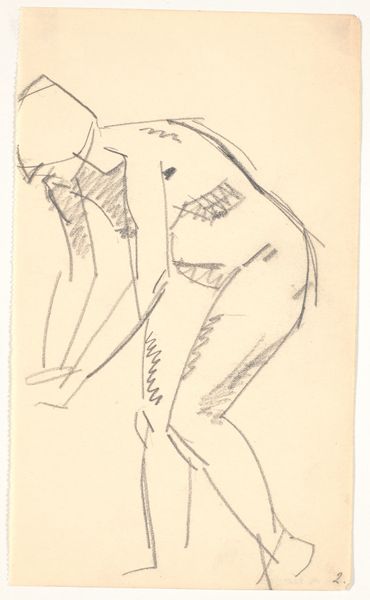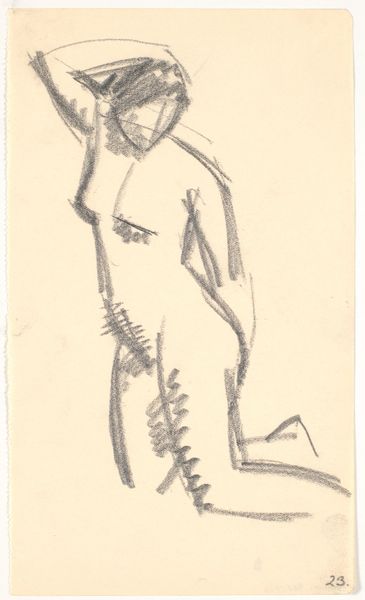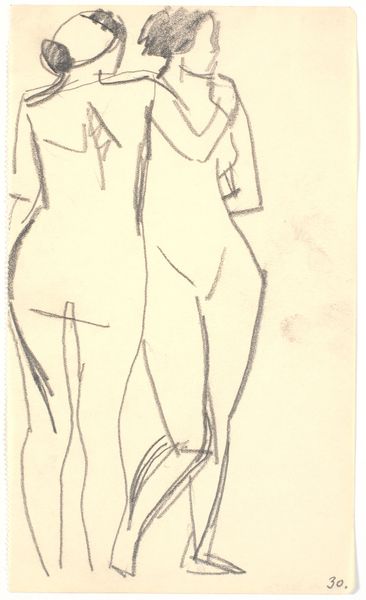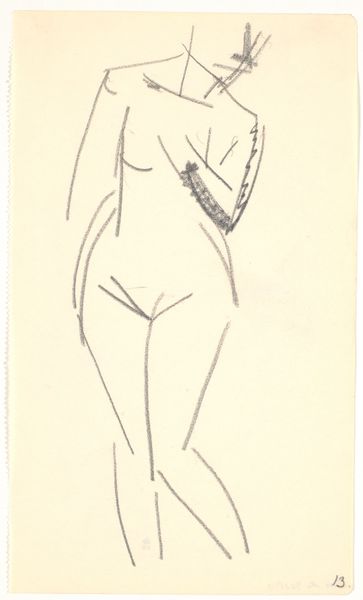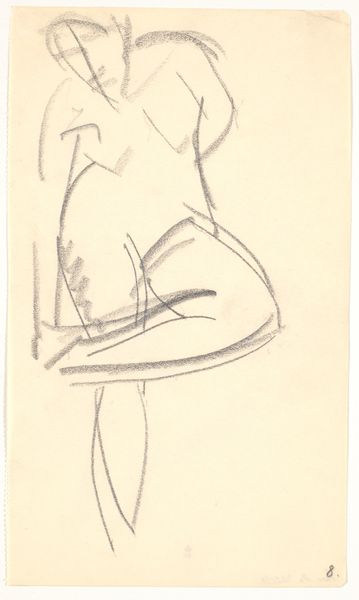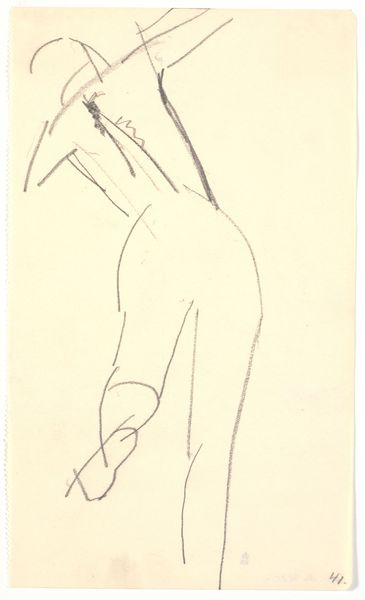
drawing, graphite
#
drawing
#
figuration
#
graphite
#
nude
Dimensions: 209 mm (height) x 124 mm (width) (bladmaal)
Curator: Here we have "To stående modeller," or "Two Standing Models," rendered in graphite between 1914 and 1915 by Karl Isakson. Editor: My first reaction is that this is strikingly direct, raw even. There's a powerful sense of line here, economical and assured. It gives it an almost architectural feel despite the softness of the subject matter. Curator: Indeed. Isakson's strategic use of hatching defines volume, suggesting form with a restrained yet deliberate mark-making. Note, too, the negative space between the figures; it’s as crucial to the composition as the drawn lines themselves. It is figuration in its most distilled form, reduced to its fundamental elements. Editor: Thinking about the social context in which Isakson was working during that time; just prior to and in the opening stages of WWI. How does this sparse rendering and depiction of the female form depart from the classic representations of women as idealized symbols, to show more reality. How does the lack of embellishment become almost revolutionary? Curator: An astute observation. While clearly alluding to classical forms and themes, the simplification resists that. It could even read as critique on that visual history. But look at the relationship between the models; is it about their figures and our interpretation, or their place among figures within culture, or even that between women. This work focuses primarily on their structures with minimum cultural trappings. Editor: Interesting; that certainly makes one think about museums and galleries. What are the power structures, the ways images come to represent not just themselves, but the viewer's relationship to those figures. A relatively modest drawing, then, ends up raising large and quite discomforting issues about the gaze itself, or that within societal norms. Curator: Precisely, and in the drawing’s very act of paring down to a visual language about reduction in excess it demands that from us when seeing and reading, creating in each of us the challenge of deconstruction. Editor: I find this a profound experience for reconsidering so many assumptions in visual and representational media. Curator: Agreed. A study in looking.
Comments
No comments
Be the first to comment and join the conversation on the ultimate creative platform.

